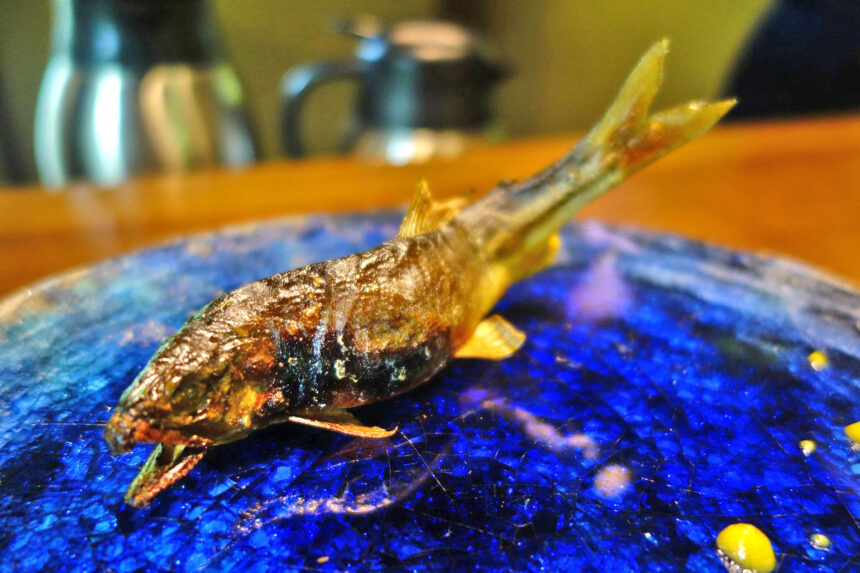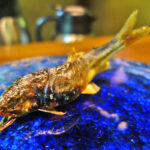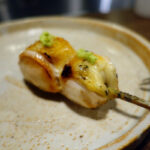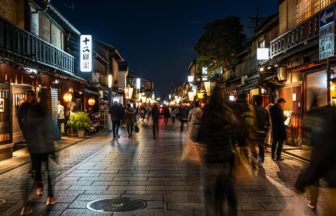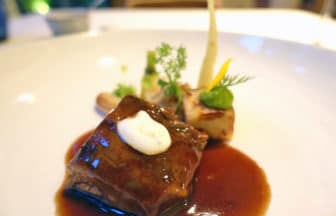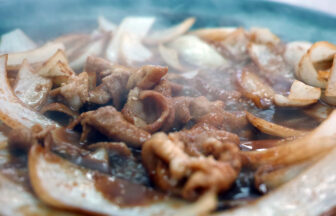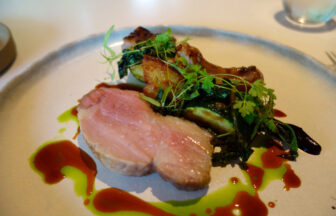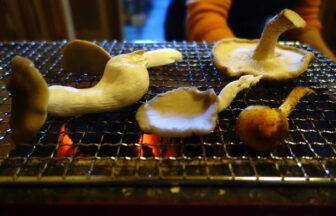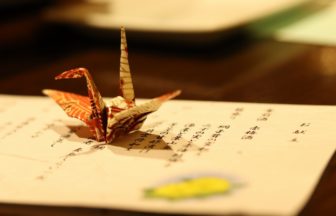In an environment surrounded by mountains, where creativity thrives, they offer innovative Japanese cuisine.
While such restaurants have slowly been emerging across Japan, one of the pioneers in this movement could be said to be “Saku.”
We visited “Saku” in Misugi Town, Mie Prefecture, seeking the ultimate form of local gastronomy.
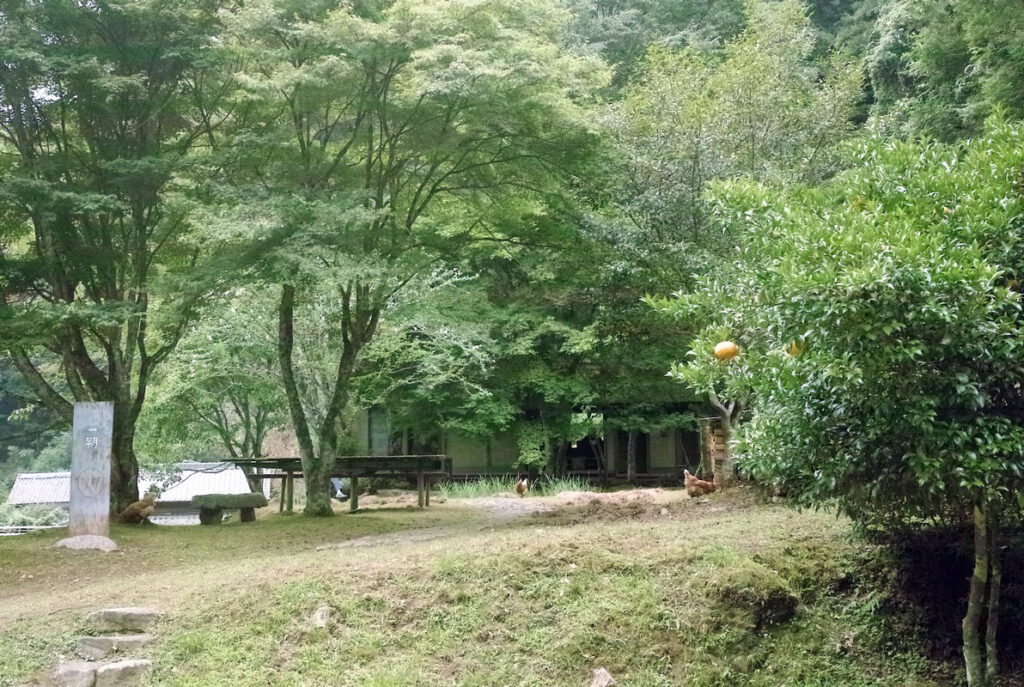
Ave. Budget: Lunch 7,000-10,000 JPY / “Michelin Mie 2019” Bib Gourmand
Check information on Tabelog
Restaurant features
A Japanese restaurant located amidst the lush nature of Misugi-cho, west of Tsu City.
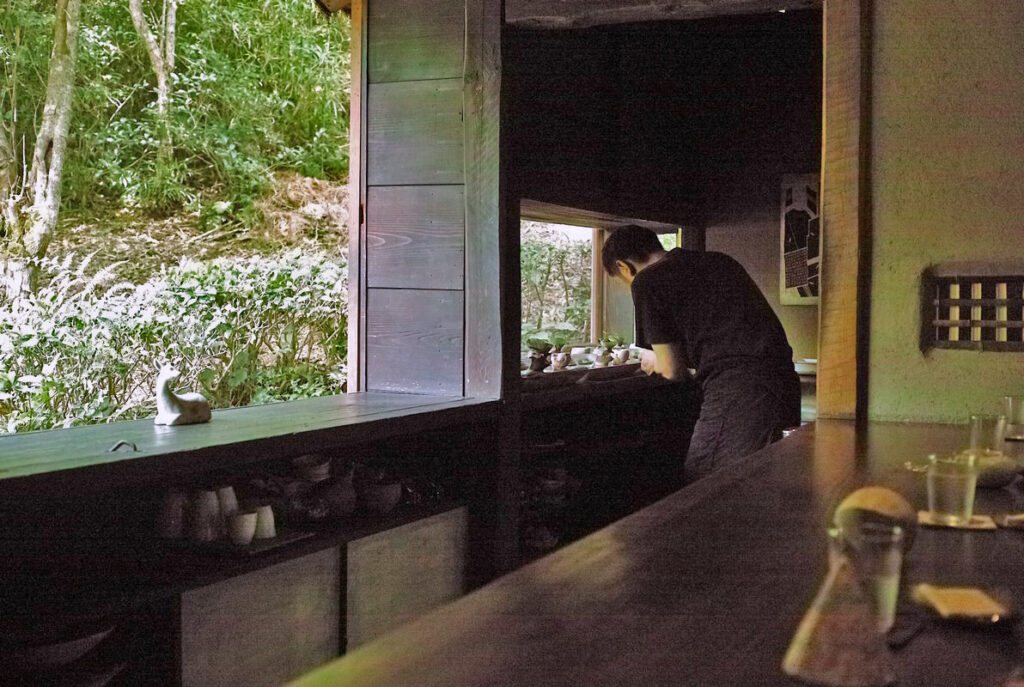
The restaurant has a gallery-like atmosphere and features stylish elements, including works by the wife, who is a ceramic artist. They offer heartwarming dishes made with vegetables from the couple’s cultivated fields, locally sourced wild game from nearby hunters, and the bountiful blessings of the Unogawa River.
That’s how I started, but among the places I visited this year, this restaurant made the most lasting impression. Not only the environment but also their creative use of natural ingredients set them apart.
A restaurant in the middle of nowhere that is difficult to reserve
Reservations can be quite challenging due to their lunch-only operation with two sessions starting at 11:30 AM and 1:15 PM. The restaurant has only six counter seats, making it difficult to secure a reservation. However, if there are reservations for two or three guests on the same day, sometimes there may be one seat available.
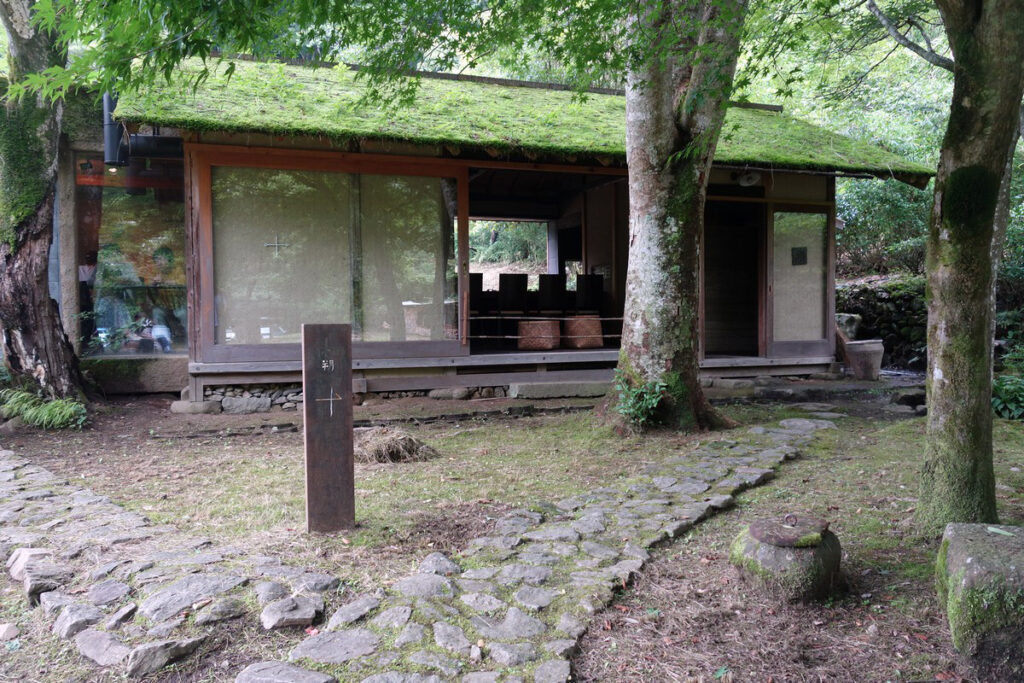
This time, I aimed for a slot in the latter half of the weekday session, which had some availability. It’s about a one-hour drive along the JR Meisho Line from the center of Tsu City. As you navigate through winding mountain roads that might make you doubt whether a renowned restaurant could really be found in such a place, you suddenly come across this quaint space.
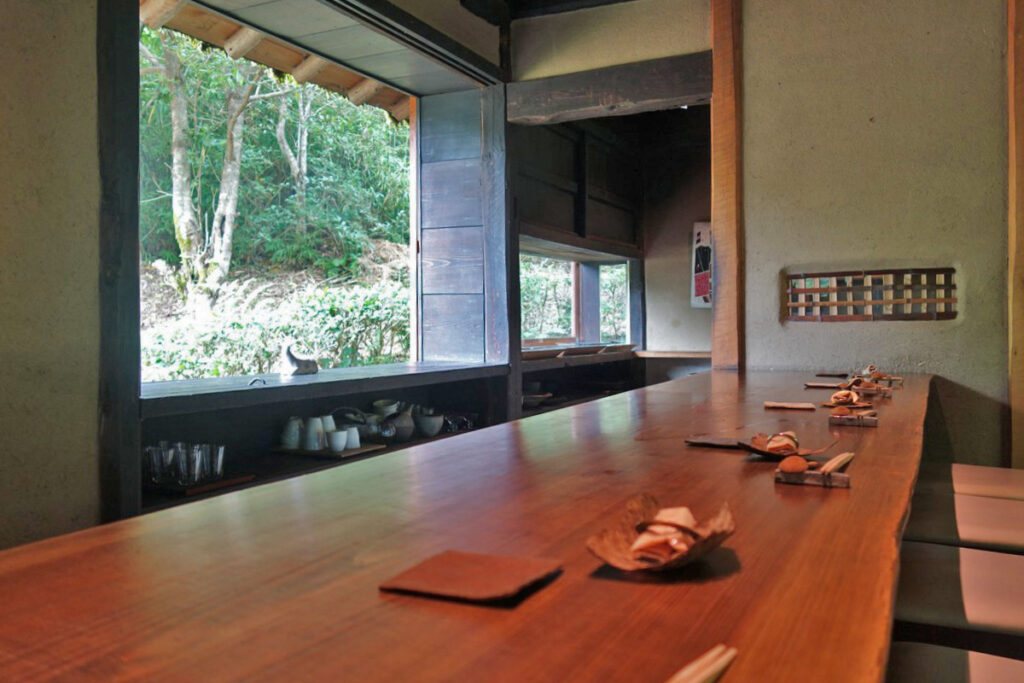
The main dining area inside is equipped with a single wooden counter. Since there’s no air conditioning, it might get a bit warm in the summer, but they have created a sense of coolness by letting water drip from open windows as part of the borrowed scenery.
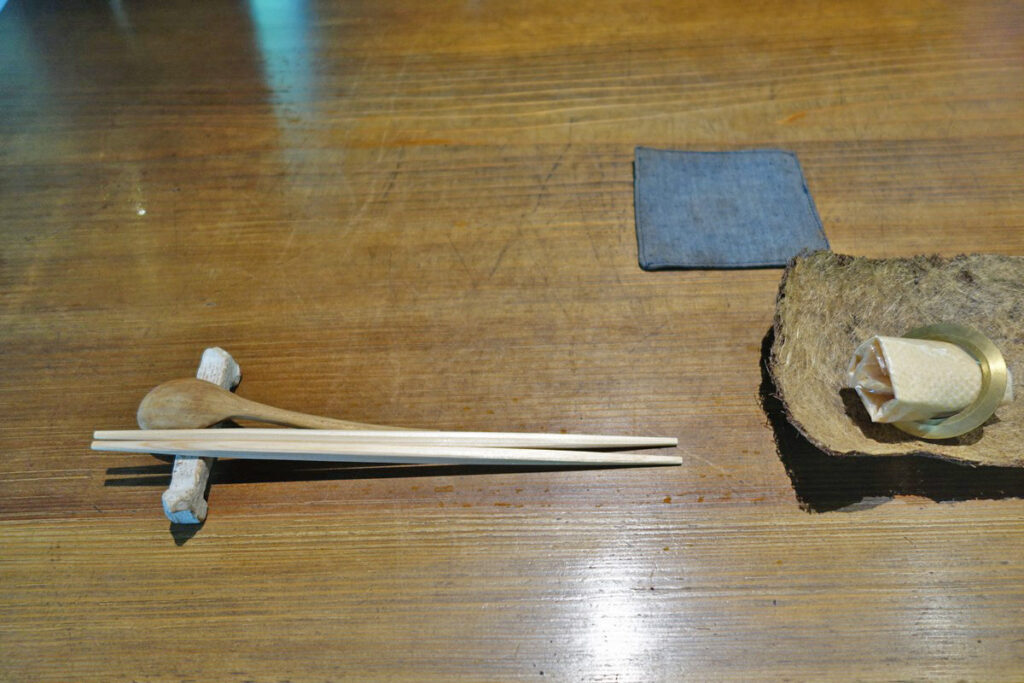
After taking my seat, I eagerly awaited the start of the course. The first item that arrived was…a stone?
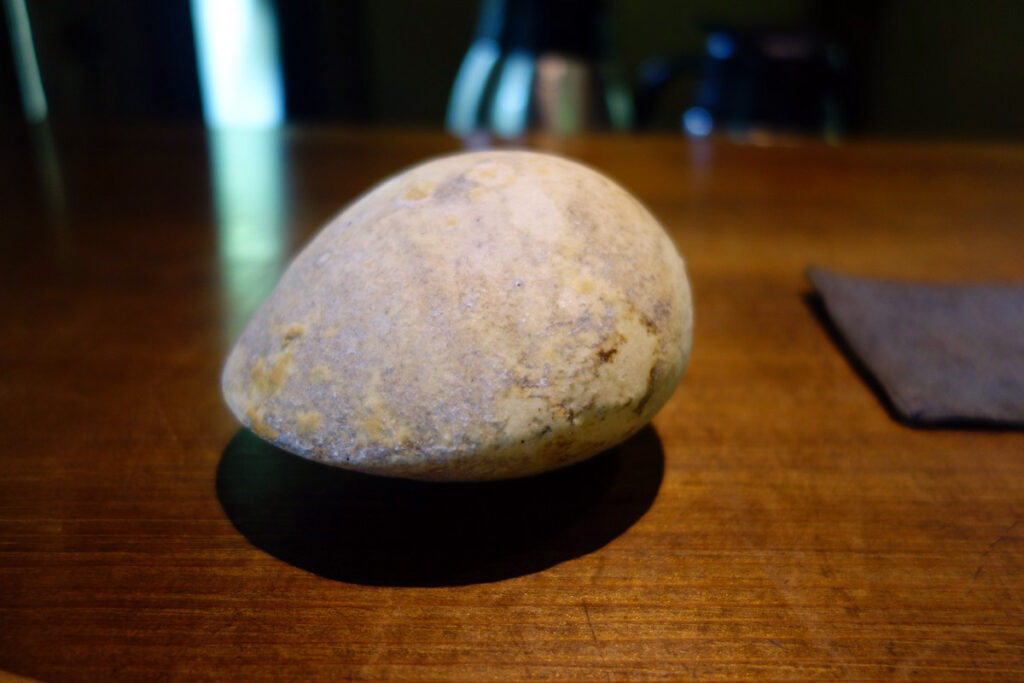
It’s actually a chilled ceramic stone, designed to provide a cooling touch.
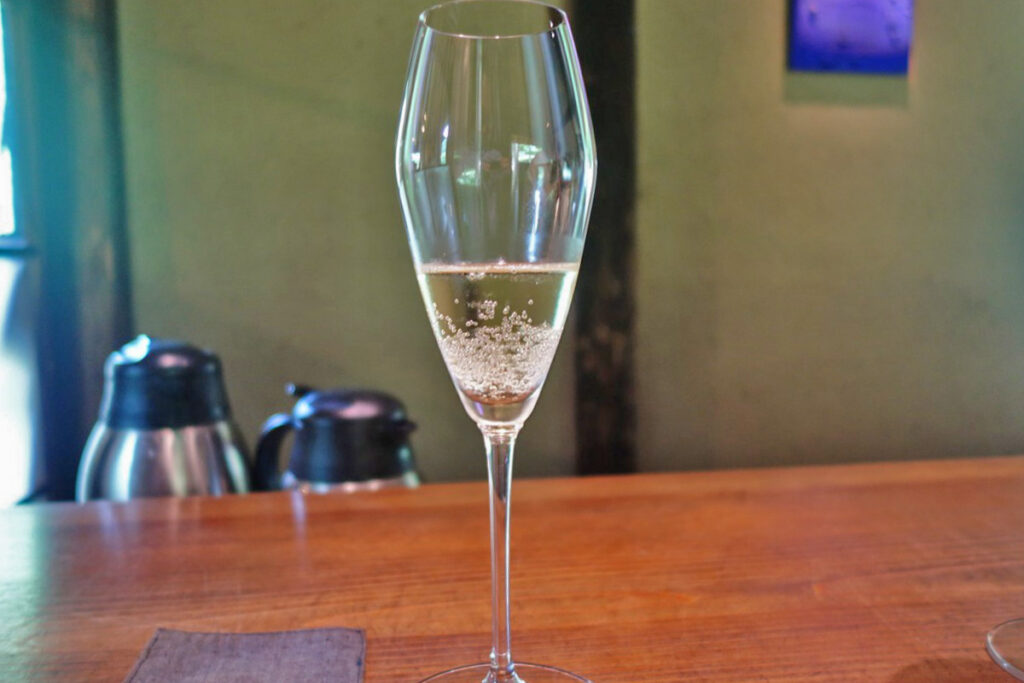
The initial drink was Chinese tea, a white tea with an interesting story. It’s said to be a single bottle that arrived in Mie from Taiwan. They re-cultivated it in the vicinity, and one of the employees kindly prepared it as sparkling water instead of simply steeping it in cold water.
Appetizers (5 varieties):
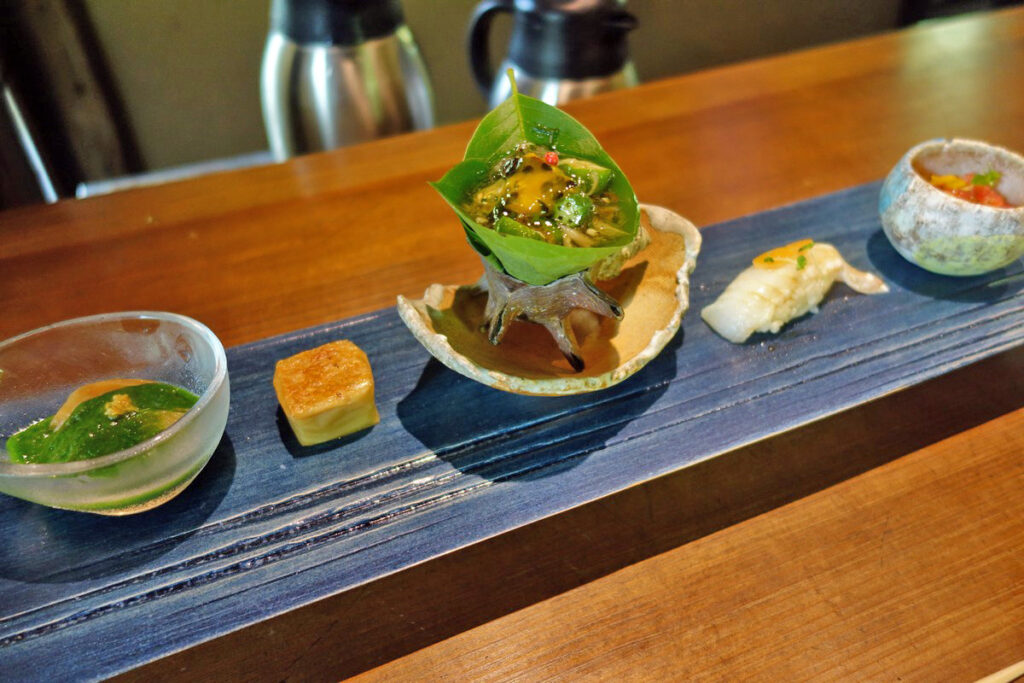
Eggplant Dutch Stew
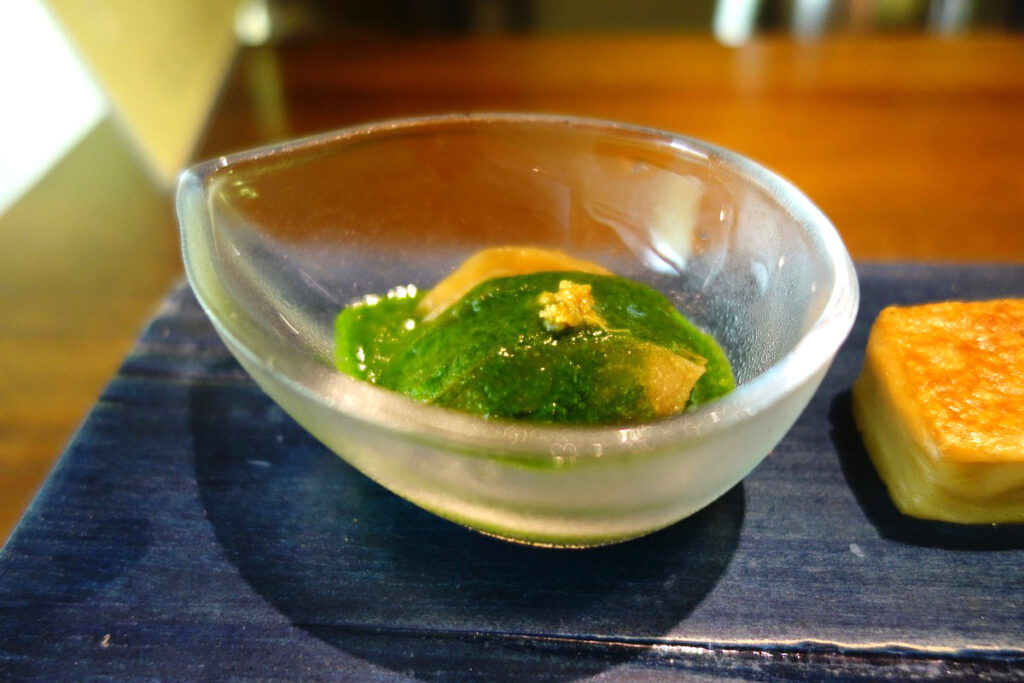
Refreshing with a sauce made from moroheiya and a touch of shikuwasa (Okinawan citrus).
Sesame Tofu
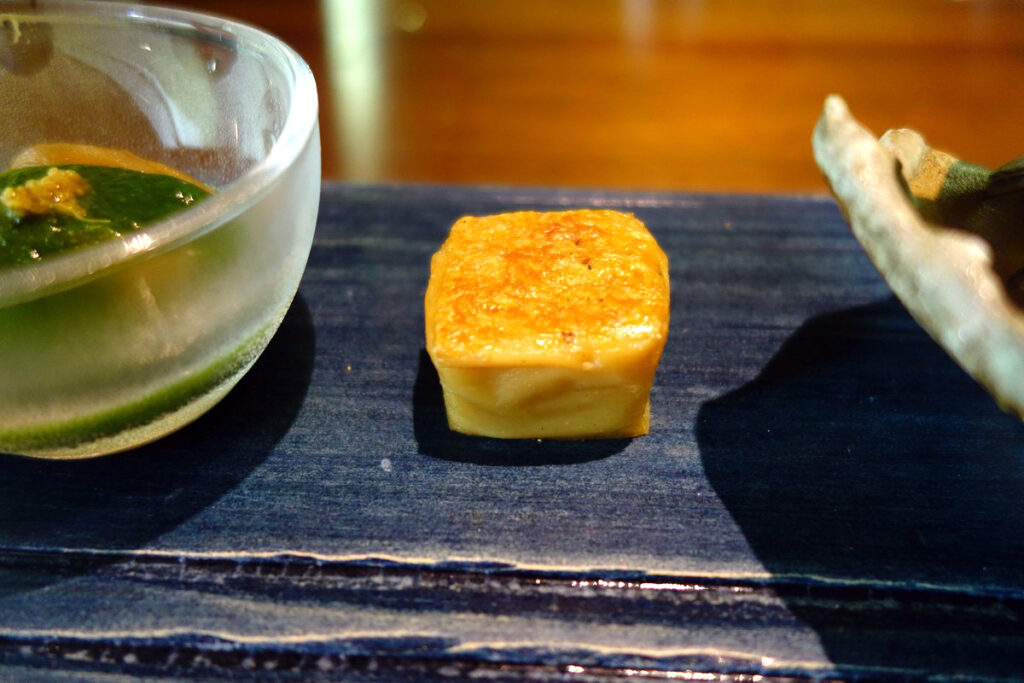
A unique take on sesame tofu, finished by grilling.
Sazae (Horned Turban Shell) Jelly Salad
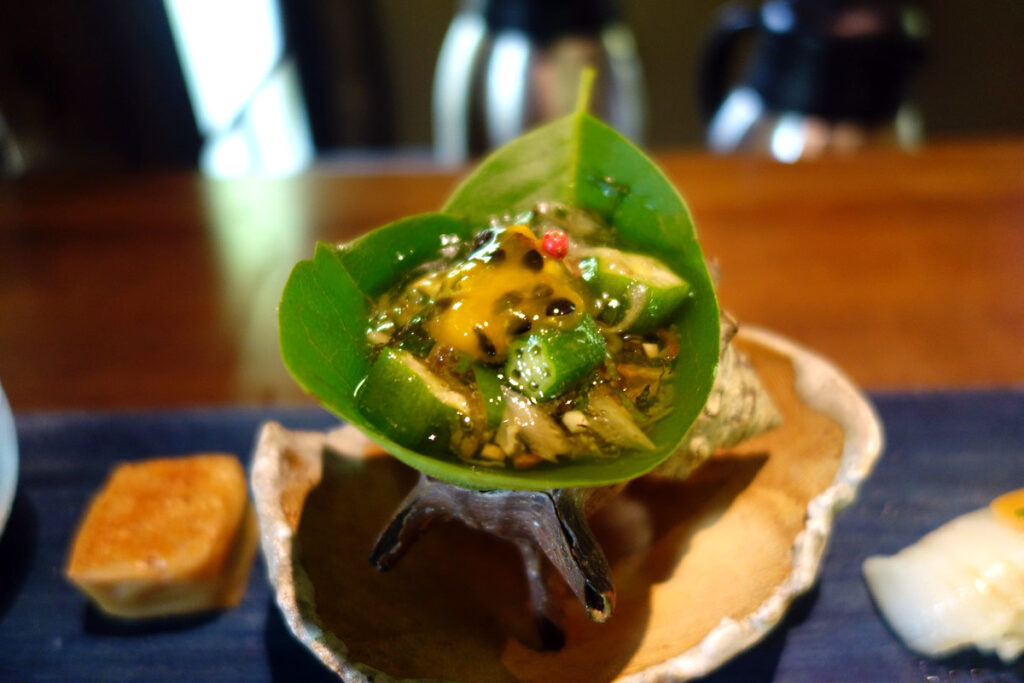
A tropical vibe with myoga (Japanese ginger) and passion fruit.
Hirame (Flounder) Sushi
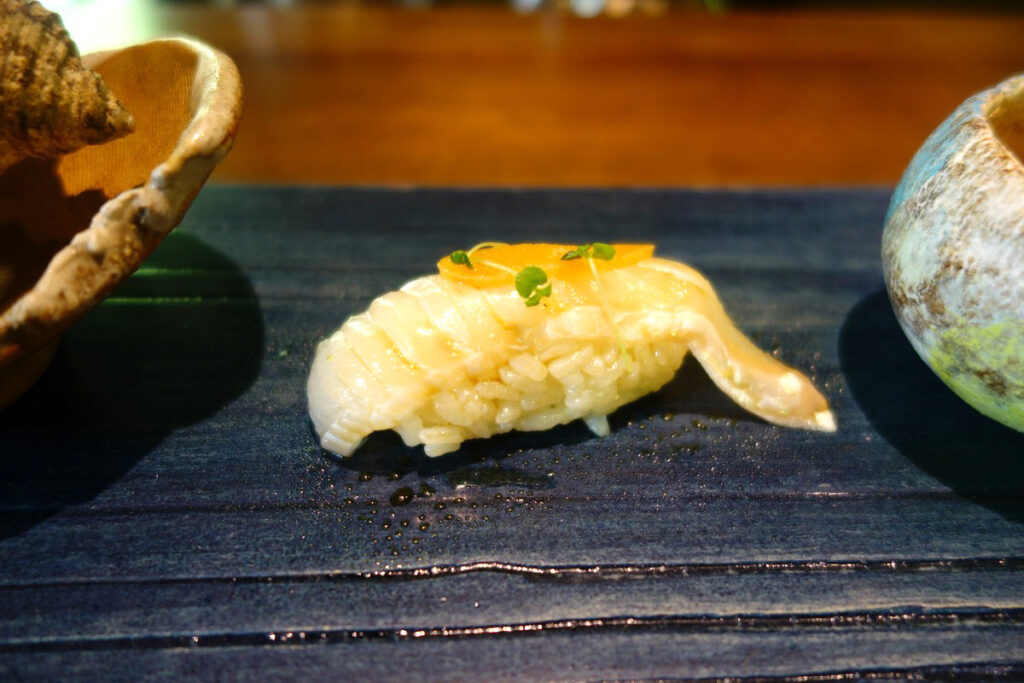
Topped with salt-preserved Sawara (Spanish mackerel) roe. Historically,
Sawara’s roe was often referred to as “karasumi,” and it is characterized by its fine texture compared to Bora’s karasumi.
Fresh Yuba (Tofu Skin)
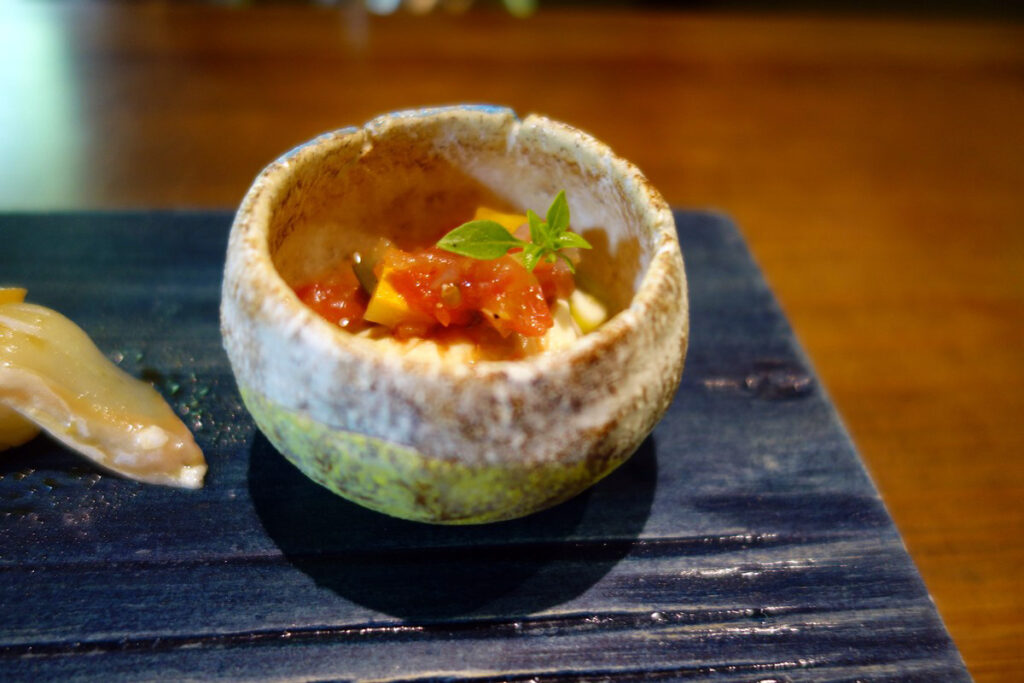
Served with tomato dressing and scented with basil oil.
Homemade Ginger Ale
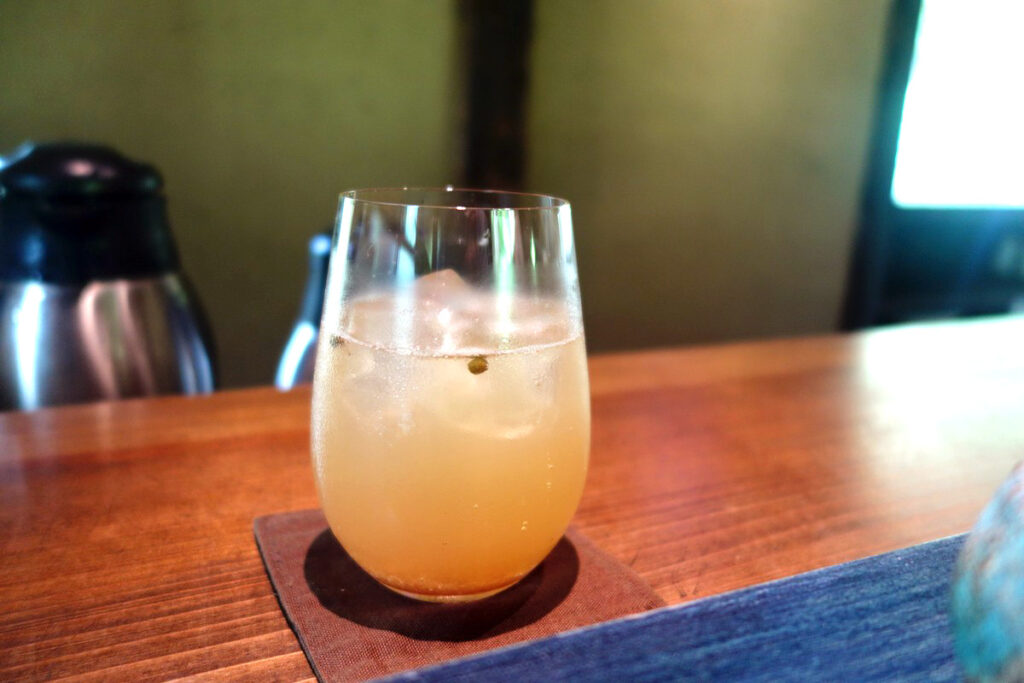
I added the homemade ginger ale that had piqued my curiosity. It had a noticeable presence of chunky ginger while maintaining a gentle and less intense flavor.
Grilled Dish:
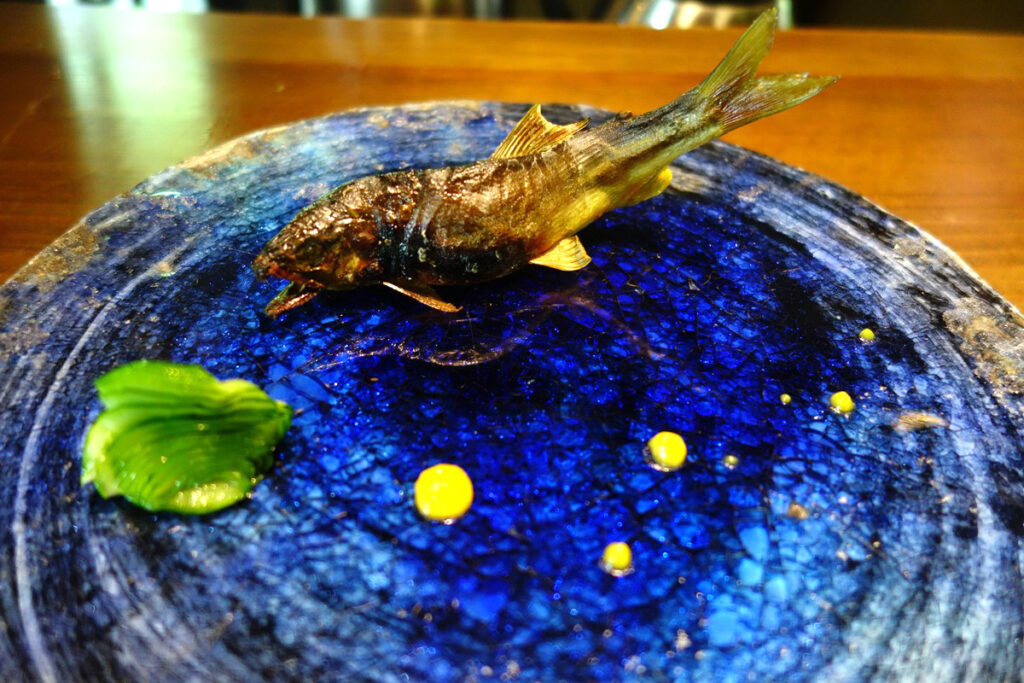
Grilled Ayu (Sweetfish) Slow-cooked over charcoal for an hour. Accompanied by yolk vinegar and cucumber.
Lidded Dish:
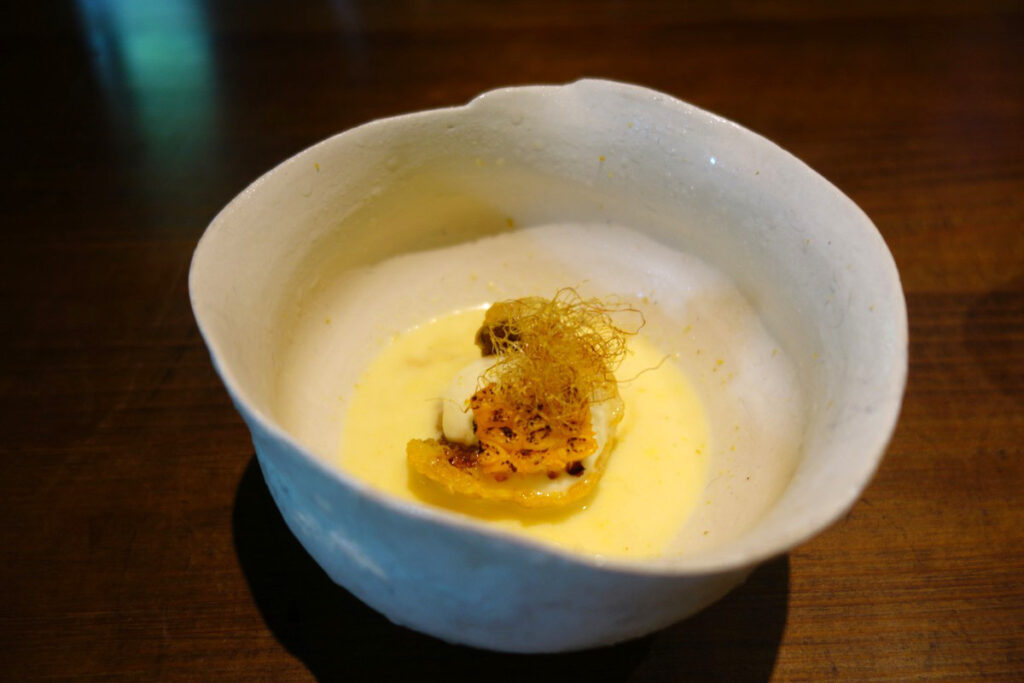
Corn Surinagashi (Corn Potage) with Grilled Isaki (Chicken Grunt) Grilled corn kernels add an impressive touch.
Main
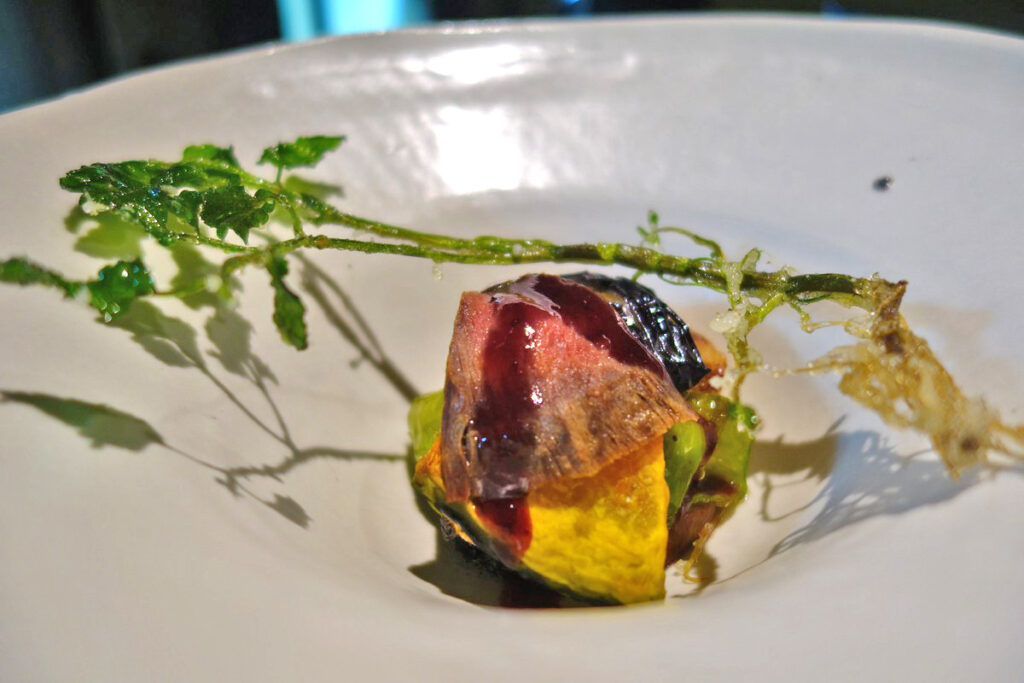
The main meat dish was grilled venison, using the outer thigh of a 3-year-old female on this particular day. It’s said to be hunted by a skilled hunter named Furuta. It’s served with pumpkin, eggplant, daikon radish, onion, and shishito peppers, accompanied by blueberry sauce.
Rice
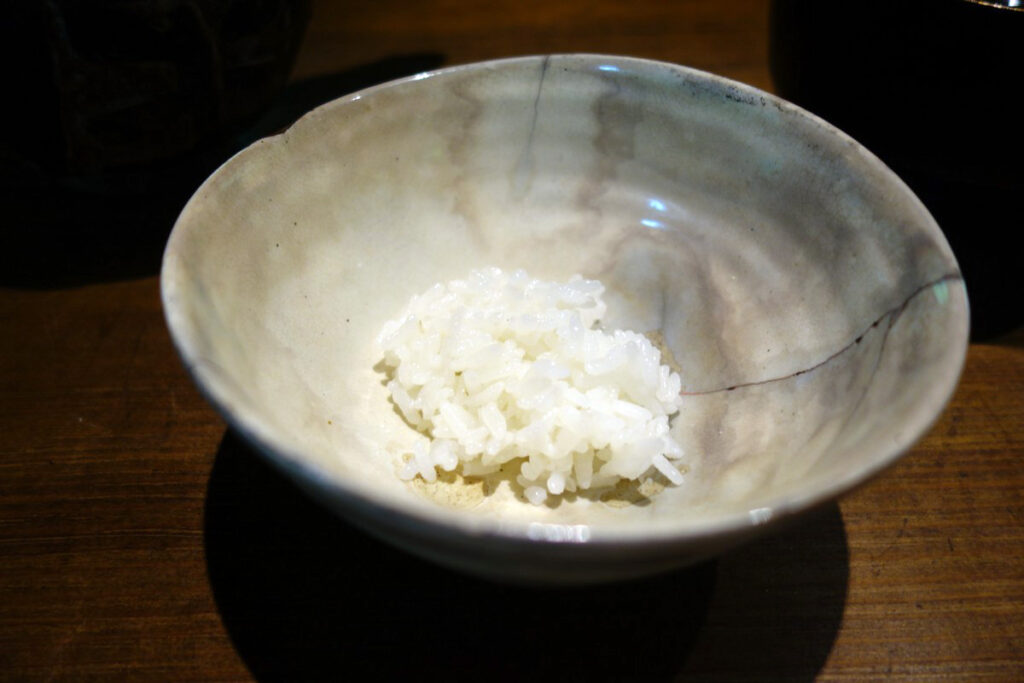
Homemade cultivated rice, grown using natural farming methods, is served plain.
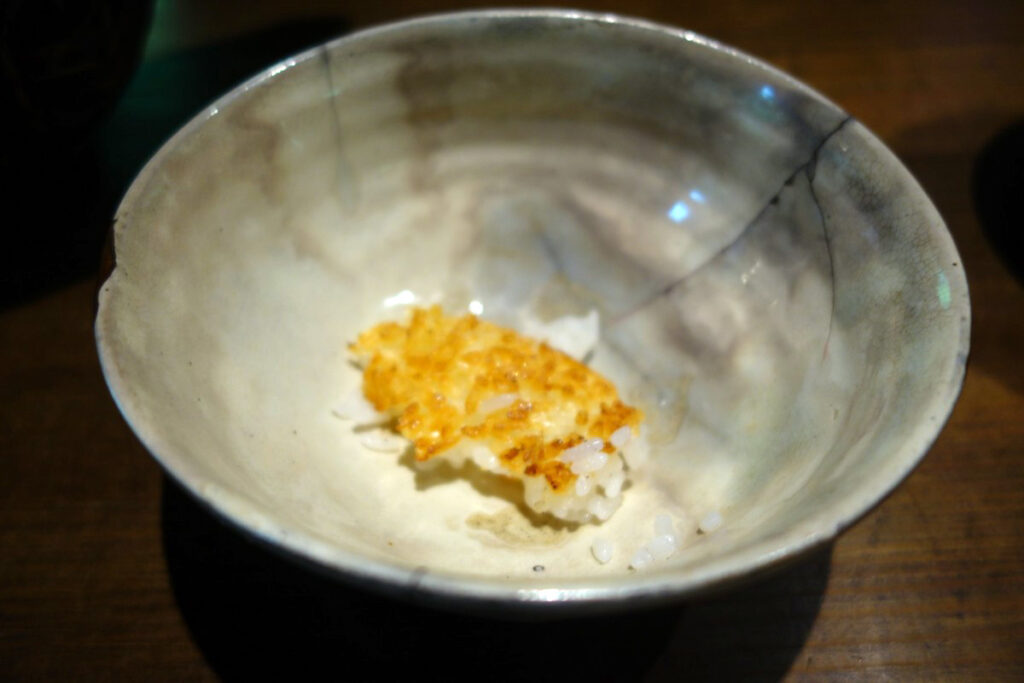
This is followed by “okoge” (crispy rice crust)
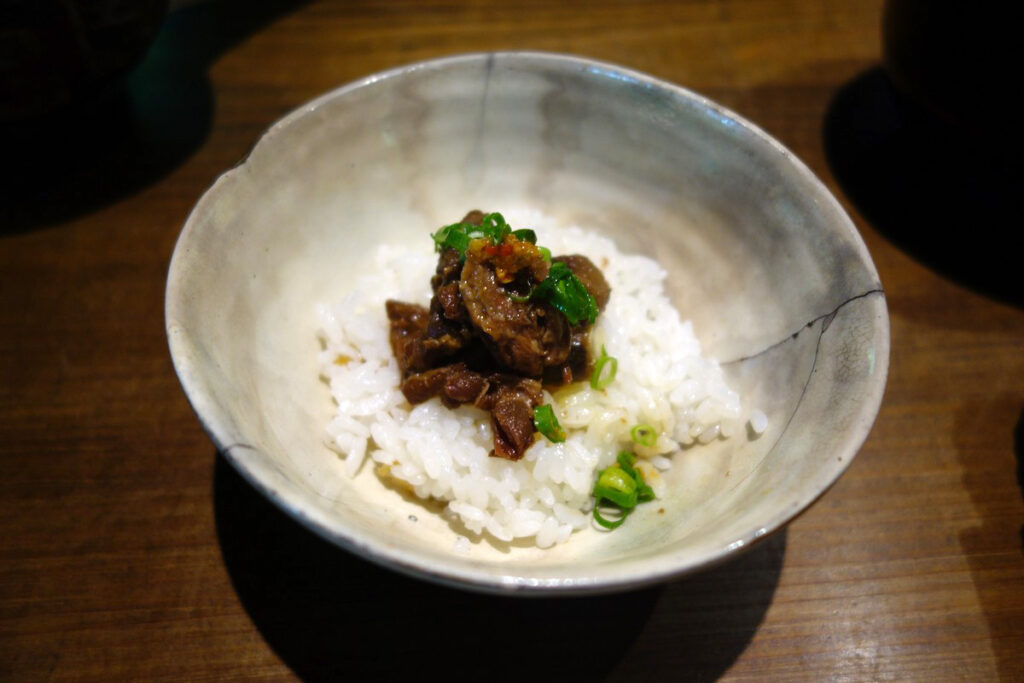
And, finally, venison rice bowl.
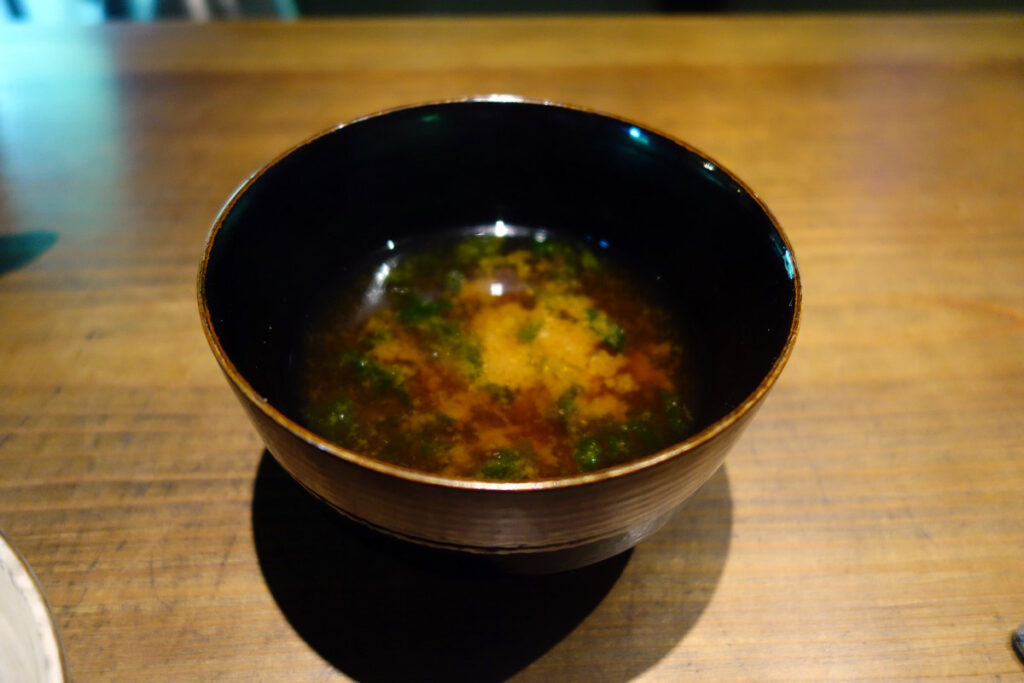
Miso soup is made with red dashi from Aosa (seaweed).

As for the pickles, they serve homemade vegetable nukazuke (pickled in rice bran).
Dessert and tea are served in a separate room.
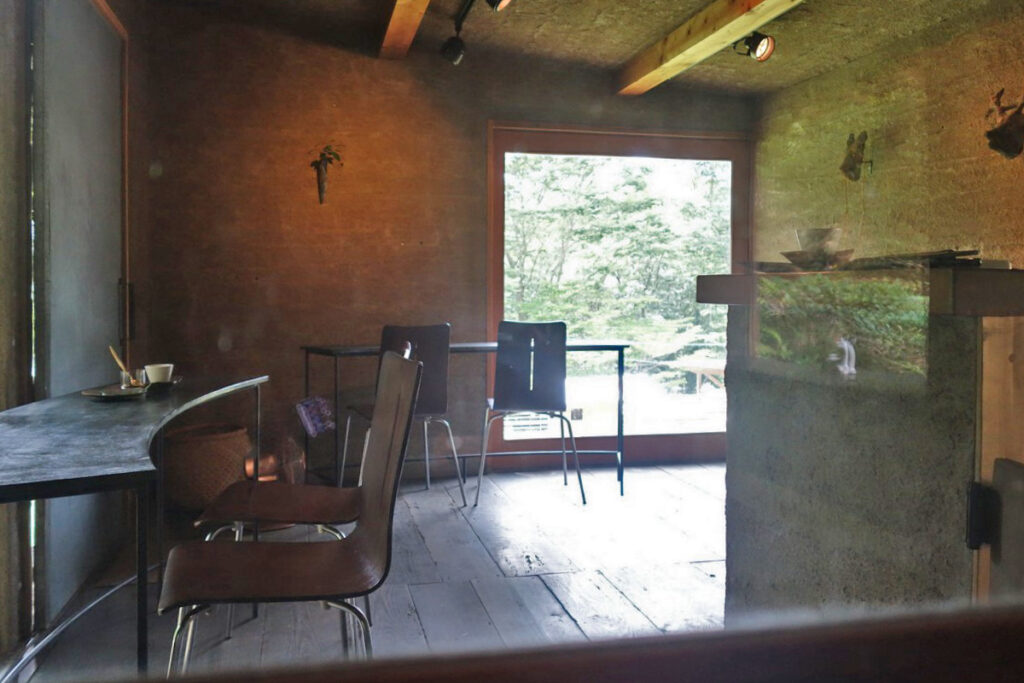
Dessert:
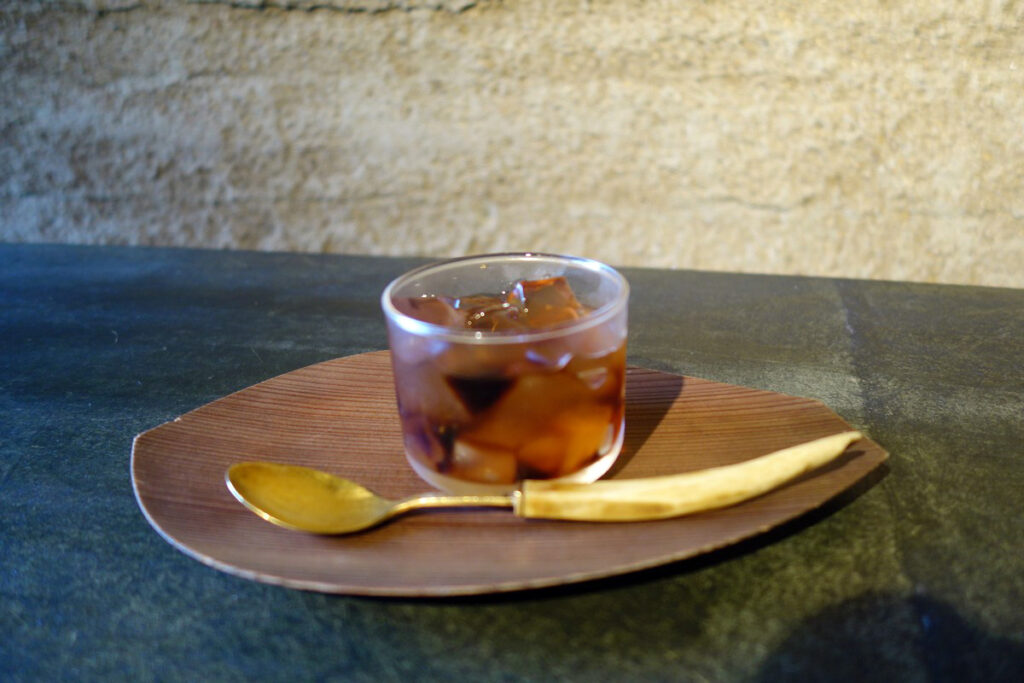
Made from locally harvested Niki fruit.
Dried sweets
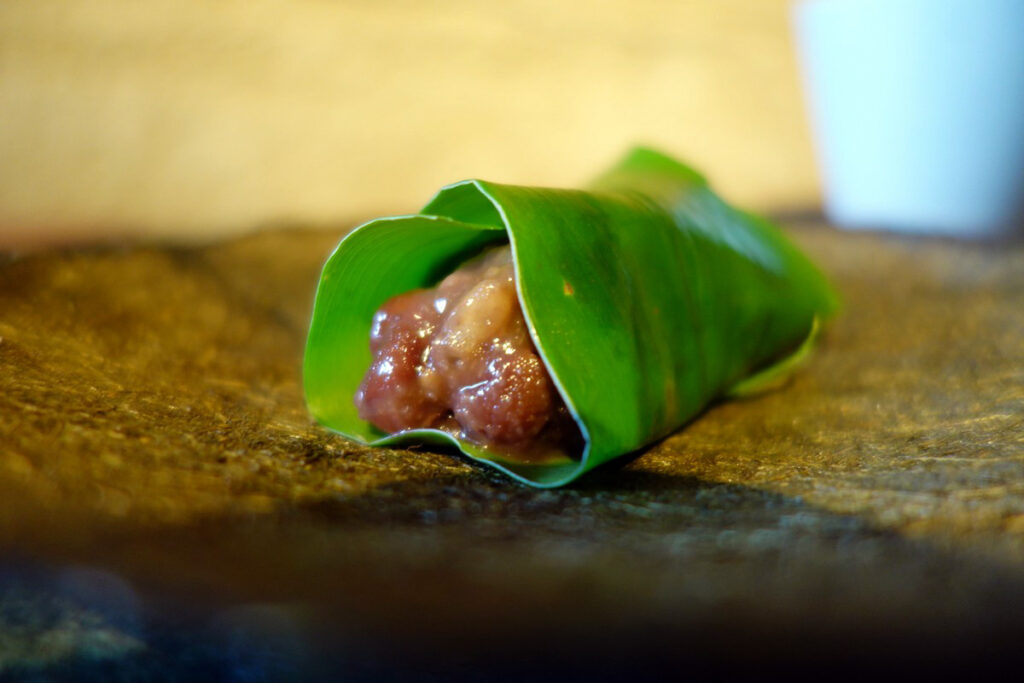
A variety of sweet bean paste and grains are included.
Menu
【Course】
“Seasonal Chef’s Selection (9-10 Dishes)” ¥7,000
Sample Menu:
Appetizer: Persimmon Enzyme and Jafu Drink
Sazae and Winter Melon with Natural Yam Sauce
Chinese-Style Chingensai and Hiratake Mushrooms with Needle Ginger
Purple Yam Honey Simmered with Cauliflower and Hemp Butter
Nigiri Sushi with Dragonfly Tuna and Shiitake Mushrooms
Grilled Sweetfish Lidded Dish: Kabu (Turnip) in Bekko-An (Simmered Sweet Sauce) with Yuzu Flavor Hot Pot
Venison in Momiji-Nabe (Autumn Leaf Hot Pot) Style Rice: Kamado-Cooked Rice
Soup: Miso Soup with Aosa Seaweed
Pickles: Nukazuke (Rice Bran Pickles)
Dessert: Water Jelly Made from Wild Japanese Parsley Collected in the Mountains Dry Sweets: Sweets and Tea
*Note: The menu and prices are for reference only. Please understand that they may change based on seasonal and ingredient availability.
How to make a reservation
Phone reservations began on the 1st of two months ago. The remaining reservation availability is posted on the official website.
Official Website Reservation Calendar
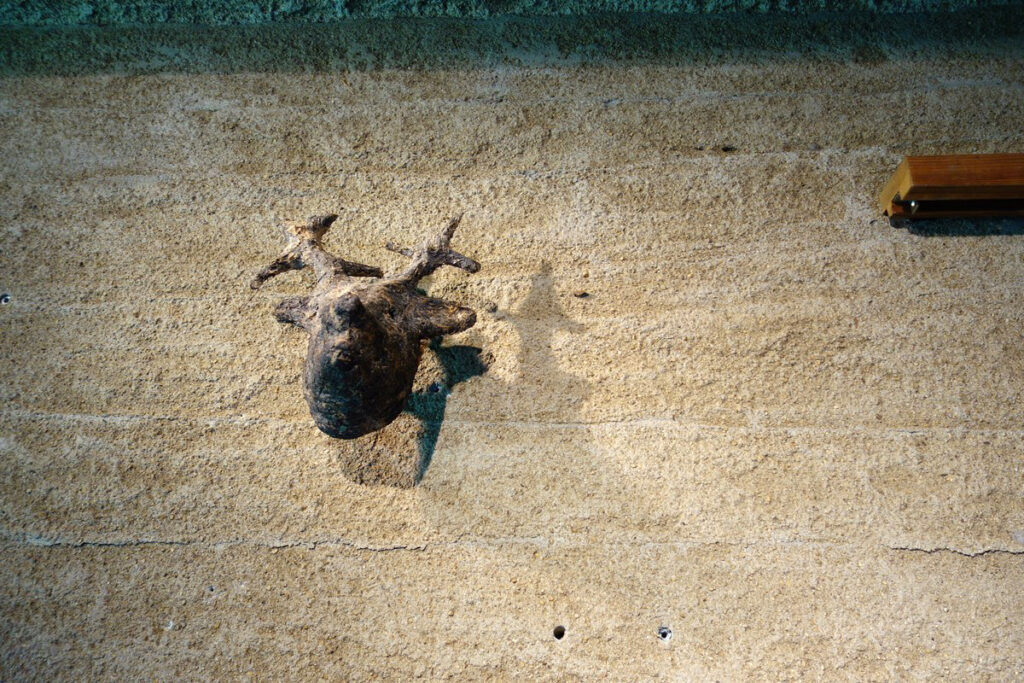
Map/Access
It is about a 20-minute walk from JR Meisho Line “Ise Kamakura Station.”
If you are coming from Tsu Station by car, it takes approximately 1 hour.

–Restaurant Information on “Saku (朔)”–
Business Hours: Lunch operates in two sessions starting at 11:30 and 13:15.
Closed: Wednesdays through Fridays
Phone Number: 080-6928-3939
Address: 3541 Yaschi, Misugi-cho, Tsu City
Official website is here.
▽Related article▽
